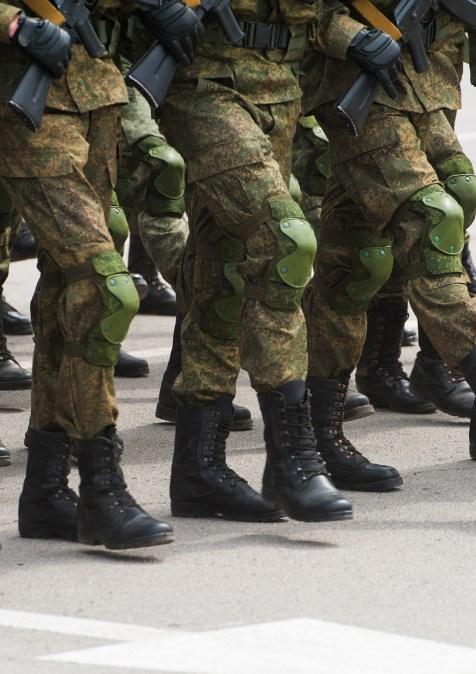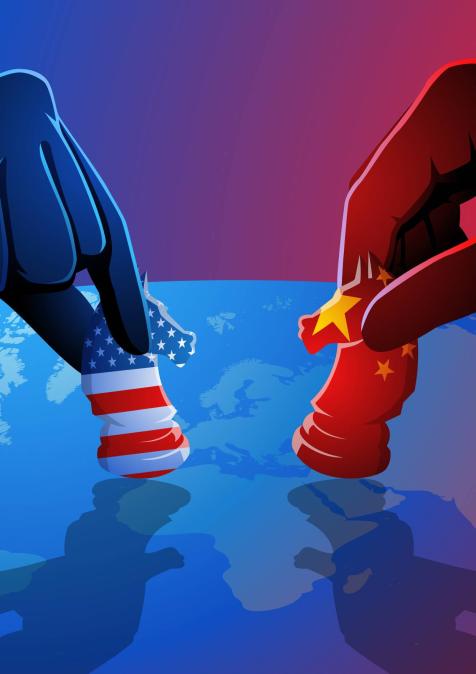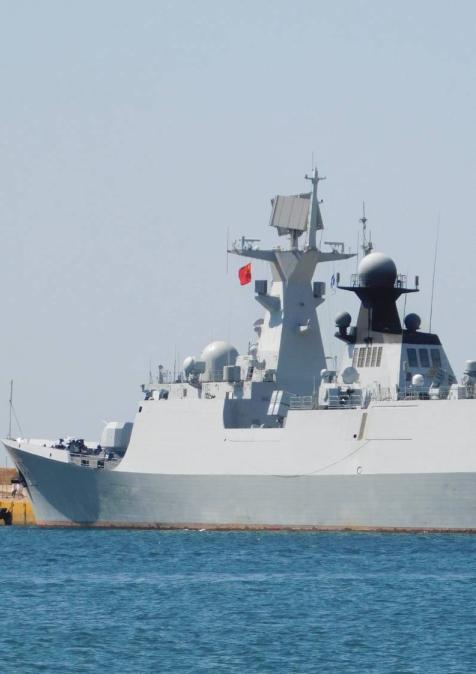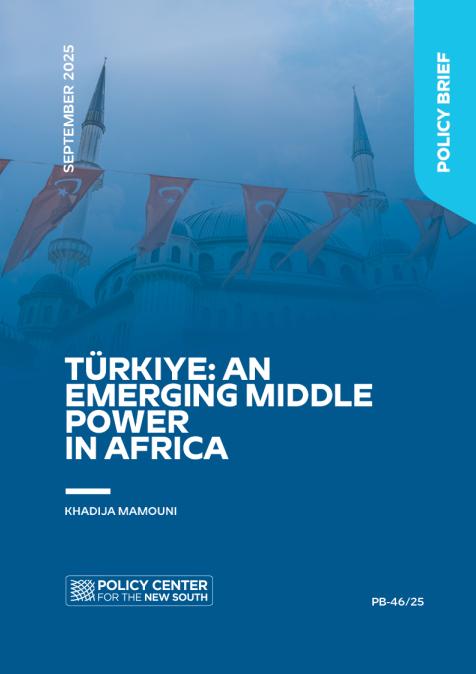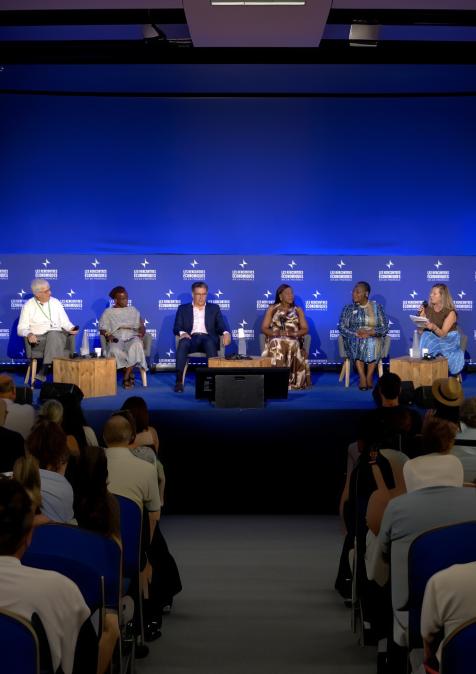Publications /
Opinion
During the Lisbon Summit back in 2010, NATO adopted its third post-bipolar Strategic Concept acknowledging the structural and functional transformation process. In addition to its traditional mission of ensuring mutual defense, stabilizing its surroundings and global power projection capability now adds to the organization’s mission. As a matter of fact, the role of NATO could be shifting from a regional defense alliance to that of a global player. However, one can only wonder whether NATO will be able to fully fulfill its new role on the long run. How can the organization cope with the Russian threat in the short-medium run? What links does NATO maintain with the Mediterranean basin?
In the framework of its seminar series, OCP Policy Center in collaboration with NATO’s Defense College held a seminar to answer these questions and to try to identify NATO’s new strategic orientations in a changing geopolitical order.
The seminar’s discussions analyzed NATO’s orientation lying within two areas. The first being the organization’s interventions beyond the geographical borders set by Article 5 of NATO’s establishing treaty, the Washington Treaty. Article 5 emphasizes that an attack against any member state of the organization would be considered as an attack against all members. The second being the partnerships maintained with countries beyond its geographical borders, such as the Mediterranean Dialogue.
Experts from NATO’s Defense College as well as other security experts explored the topic from two angles. On the one hand, the light thrown on NATO’s intervention in Afghanistan and Libya helped draw main lessons to understand its motives behind acting beyond Article 5’s frontiers. On the other hand, security cooperation was looked at to review NATO’s achievements and to forecast possible future orientations.
The world’s previous order is gradually adapting to emerging players on the international scene and a new order is shaping up. A world order in which states are increasingly connected through a transnational division of labor, as defined in Wallerstein’s ‘World-System Theory’. Against this background, NATO has yet to redefine its position in the middle of global disorders affecting the Atlantic space at large.
Afghanistan’s Intervention: A Test for NATO
NATO’s first assistance to afghan forces was provided under a United Nations mandate adopted back in 2003. It slowly gained ground over the North, East, and then the South of the country. The Alliance, which refers to all NATO member states, started to adopt a comprehensive approach where it transposed the lessons learnt from the U.S. led intervention in Iraq directly on to Afghanistan. In Iraq, NATO provided a great logistical support as well as an important forum for consultation on the Iraqi context. Through joint training during peacetime, the allies were able to coordinate their military operations in Iraq. In addition, NATO has been using the deterrence strategy which consists of having the military capacity and the will to use it in case of attacks. As an example, NATO claims that this has prevented Saddam Hussein from attacking Saudi Arabia and Turkey. Based on those lessons, the organization initiated its intervention in Afghanistan.
However, as early as 2010, NATO slowly started to disengage from Afghanistan because of a battle fatigue due to an operational tiredness and to the reduction of defense budget in a crisis context. In addition, with the recent return of Russia as a potential opponent, NATO sought departing from Afghanistan whilst keeping a good lasting impression at the same time. International Security Assistance Force (ISAF), its UN inherited mission, ended in December 2014 with a heavy outcome. It mobilized 132 000 fighters from 52 different countries to provide a limited support to afghan forces and to stabilize the country. During the 12 years of war, 3515 people died and over 12 000 were injured. The global direct cost was estimated at 686$ Billion. Including indirect costs, however, it brings the estimation to 4.2$ Trillion.
It was the organization’s first intervention outside of its borders following the Netherlands and Germany’s request. Therefore, NATO claimed that it acted from the back door by providing operational support.
Could Libya’s Strategic Narrative Apply to Syria?
In 2005, a new international security norm was formally adopted: the ‘Responsibility to Protect’ (R2P). This concept points out that state sovereignty can be breached on the ground that the state failed to protect its population from mass crimes and human rights violations. With the emergence of this concept, questions arose on NATO’s abstention over the Syrian crisis in opposition to its intervention in Libya. In the public’s opinion, NATO’s abstention questions whether the R2P is not in fact a concept with variable geometry. From NATO’s perspective, five elements enlighten this questioning and set differences between Libyan and Syrian contexts.
-
The diplomatic context
NATO’s intervention in Libya was provoked by the Arab League convening of the United Nations Security Council (UNSC) where it requested a no-fly zone over Libya. The UNSC ruled that all necessary means should be taken to protect the lives of civilians. NATO’s involvement lied essentially in passing on the operational command field. The military organization was invited to intervene by Italy who had neither the sufficient military nor the financial capacity to do so. Once again, it acted from the back door on March the 31st 2011.
-
The conflict dimension
The Libyan war was different from the Syrian war in terms of key actors in place. In Libya, Kaddafi was fighting against the opposition, whereas in Syria, multiple actors were in place in addition to a fragile and fragmented opposition. Such fragmentation made it difficult to identify the key players to engage with.
-
The Alliance system
History shows that Libya maintained strong ties with the Soviet Union during the cold war and that these ties have been well kept since 1991. Although Russia criticized NATO’s intervention in Libya, Moscow argued that Kaddafi should be ousted from power as he lost his legitimacy. During the war, Kaddafi’s only support was the African Union. He lost many allies such as Turkey and the Gulf monarchies. On the opposite side, Syria was still strongly backed, mainly by Russia and China who were both against any military intervention. For Russia, maintaining its economic ties with the Syrian regime was a priority, whereas for China, Middle Eastern problems could only be solved by the local population. With that in mind, it was impossible for NATO to consider intervening in Syria.
-
The operational challenges
Intervening in Syria raises the question of the means to be used. Should a no-fly zone be decreed? Or should a military intervention be conducted on the ground? Syria’s geography is quite complex which makes it matter all the more. Indeed, the country has a highly fragmented territory which renders any intervention on the ground hard to manage.
Another challenge for NATO comes from Russia’s arms acquisition. It recently deployed its latest mobile air defense system and anti-missile S-400 Triumph technology in the military base of Hmeimim in Syria. A direct consequence of this deployment is that NATO would require the Russian authorization to fly over the Syrian territory. In other words and given the previous elements, Russia has closed the Syrian sky to NATO’s airplanes.
-
NATO’s internal debate
Through a NATO lens, the Libyan intervention is regarded as a success story given the fact that it was conducted in the framework of a partnership during a short period of time and at minimum costs. It should also be highlighted that it was the only operation undertaken in the Arab world. Today, the serious threat according to NATO is Russia. Putting Libya into today’s context of the Russian annexation of Crimea would probably have not encouraged NATO’s intervention at the time. Other threats to be contained might emerge from the Mediterranean basin. However, it is not certain to which extent NATO would intervene once again in an Arab country. Its mechanism requires that the host country requests NATO to get involved and this rarely happens for sovereignty keeping reasons.
As a result of the aforementioned items, NATO is trying to go back to Article 5 areas of intervention, whilst maintaining a strategic focus on its eastern and southern geographical surroundings. In fact, NATO’s main challenge now resides in defining a global strategy in the light of the diverging interests of its member states.
The Mediterranean Dialogue: An Alternative to NATO’s Membership?
In addition to its country members, NATO maintains a good partnership with countries in its environment. The Mediterranean Dialogue involves seven non-NATO members including Morocco to demonstrate how security in Europe is tightly linked to that of the Mediterranean basin.
The Mediterranean Dialogue should maintain NATO’s central strategic role of providing a framework for cooperation to cope with common challenges of peace, stability and security. The traditional threat that existed during NATO’s creation context is now different. Threats are scaling up, changing in their geography and core nature. As a consequence, it is essential for NATO to interact with countries beyond those of the Mediterranean Dialogue. Several challenges emerging from the Sahel or the Atlantic region affect the Mediterranean basin, consequently affecting NATO’s close environment.
So far, reasons for not intervening outside of the organization’s borders are mainly due to partner countries. Finding common priorities represents a major challenge within NATO, because every country pulls on a different side which hampers reaching a consensus over a military operation. In addition, bilateral relations prove more efficient than multilateral ones. A good illustration is Morocco’s strong cooperation with NATO which is reinforced with the Mediterranean Dialogue. Through exchange of knowledge and combined training, several operations are jointly conducted and both partners contribute in various ways to enrich the partnership. Furthermore, Morocco is part of NATO’s interoperability platform, enabling a perfect synergy among armed forces. This platform makes Moroccan and NATO soldiers perfectly interchangeable thanks to common training they go through.
NATO in the Mediterranean seems to be challenged by Russia, which represents a strategic threat according to the Atlantic alliance. Such claims are based on the Moscow’s potential future position in the region. It enjoys the status of an internationally recognized power, in addition to having a security interest combined with economic motives such as energy and arms. Such elements make Russia appear as a hybrid threat to be carefully watched by NATO.
With the upcoming Warsaw Summit scheduled for July 2016, NATO will release two new strategic orientations. On the operational side, the first novelty resides in launching a new and highly reactive strength entitled “spearhead” to ensure stability in NATO’s neighborhood. Lastly, the shaping of a “sustainable partnership” with Afghanistan in the context of the ‘Resolute Support’ mission dedicated to training Afghan security forces will represent NATO’s second novelty.
In summary, NATO is seeking to readapt its doctrine and to mobilize new tools to pursue its goals. Its core mission of preserving the freedom and the security of its members remains untouched, however, the way the organization operates has changed.

